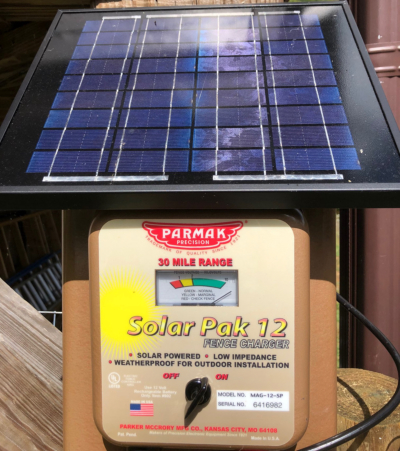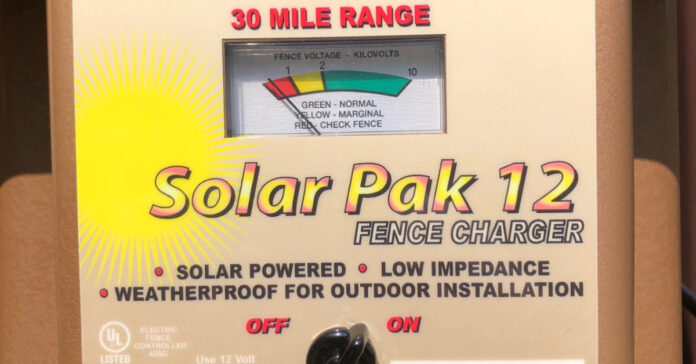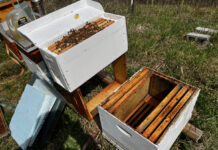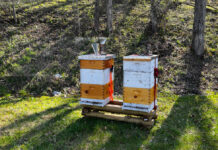Yesterday, I picked up 100 pieces of black plastic foundation for deep beehive boxes and 100 pieces of white plastic foundation for medium supers. Both have double wax, which means the bees will draw it out fast. The new foundation will allow me to construct frames for my beehives during the cold winter months. I have assembled all my deep hive boxes, but I need to assemble more supers. My hope is that I won’t run short of equipment in the middle of 2023.

I use black foundation for my brood boxes because the dark color makes it easier to see eggs and very young larva. At my age, my eyes need all the help they can get.
I use the lighter yellow or white foundation for my supers because it helps me judge the color of the honey. This allows me to separate the light, dark, and amber honey before we extracting the frames. By doing so, I can sell honey with different flavors rather than blending it all together. My plan is to work a couple of new frames of foundation into each hive box, allowing me to remove a couple drawn out frames to add to my new splits. This year, I want to put empty supers on the hives sooner than I did last year.
Once the weather warms up, I’ll build some more hive stands and extend the fence to give me more room.
More Honey Jars
I also purchased 96 one-pound glass jars and a dozen quart jars. While I still have at least 72 plastic squeeze bottles on hand, one of my retail customers prefers glass, so I got some glass honey bottles. I am filling and dropping 24 bottles off Wednesday and another 24 the following month. After that, I’ll be out of honey until the June harvest.
One reason I made this purchase was a 15 percent discount offered by my bee equipment supplier. That saved me $67. By picking them up in person, I also saved on shipping. Not only would it be expensive to ship eight boxes, but I hate to ship glassware via UPS or Fedex for fear of breakage.
Electric Fence Problems
While feeding the chickens on a rainy day over the weekend, I noticed that the solar-powered electric fence was not making its traditional clicking noise. I had inspected it and tested the voltage a few weeks prior, so this came as a surprise. The next time the sun was shining, the fence was working fine. It worked for a while after the sun set, but was out by midnight. My conclusion is the battery is dying.
This fence has been operating for about 18 months, so it’s disappointing that the battery has failed this quickly. Of course, the bitter cold temperatures may have damaged the battery and contributed to its premature failure.
I figure I have three options:
- Use my 12-volt battery charger to charge the battery to capacity and see if that helps it make it through the night. We have had so many rainy, snowy, and just dreary days that it may be I am not getting enough sun for the solar panel to recharge it. If I top it off, that may solve the problem.
- I can buy the official Parmak replacement battery online for between $85 and $90. It is a 12-volt 14-amp hour gel battery. I may also be able to get one nearby and hope the price is cheaper because it does not include shipping. My local retailer has excellent pricing and I like supporting a local business.
- I can buy an alternate, generic battery with 18 or even 22 amp hours at a lower cost. While this will save me money, it may not fit inside the battery case built into the fence charger. I’d prefer to keep everything self-contained.
My Solution
Writing this post has helped me get my thinking straight, so here is what I will do: Tomorrow, I will remove the battery and examine it for damage, such as swelling or leaking. If there is no damage, I will attach it to my charger and see if the charger will charge it. If it accepts a full charge, I will put it back in my fence and carefully monitor its performance.

Ideally, the fence will have enough power to run at least 48 hours without sunlight. If it fails to do this, then I will replace the battery. I’ll shop around locally and see if I can find a suitable replacement at a better price than the official Parmak battery.
This is a good example of the kid of failures it is good to experience before the SHTF. The last thing I need is the fence that protects my garden, my bees and my chickens to fail just weeks or months into a disaster scenario. I had hoped the battery would last three years; I was off by 50 percent. Now I have to consider keeping a spare battery on hand.
Like they say: live and learn. This is why it’s a good idea to get established in your retreat, prepper property, or homestead before the SHTF. You get to experience the problems while you still have resources available to fix them. If this had failed after the SHTF, I’d salvage a battery from my lawn tractor or a car to power the fence. It expect I rig it up fairly easily, but it would not be ideal.
The Next Cold Spell
I checked the spec sheet on a few brands of gel batteries and while they are rated to -4°F, they recommend maintaining a state of charge greater than 60 percent when temperatures drop below freezing. I have no idea what my state of charge was. That fence may have run the battery all the way down in the cold.
More online research says the electrolyte should not freeze until around -75°F and the battery should recover when warmed up. If this is true of all such batteries, then the cold should not have damaged my battery. I will never know if the sub-zero weather caused the problem or if it is just getting old.
My options during the next serious cold spell appear to be: remove the battery and bring it indoors until it warms up or hope this failure had nothing to do with cold weather. I am leaning towards removing the battery as a precaution. If necessary, I could always rig up a 12-volt transformer using an extension cord and house power to power the fence, but I am not convinced that is necessary. When the wind chill is -30°F, I expect all the bears will be hibernating in a nice cave rather than raiding my bee yard, the chickens will be in their coop, and there won’t be anything growing in the garden.







